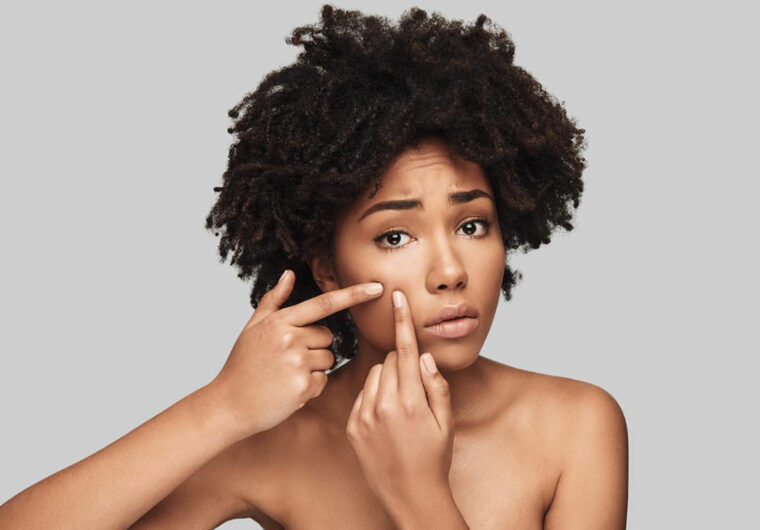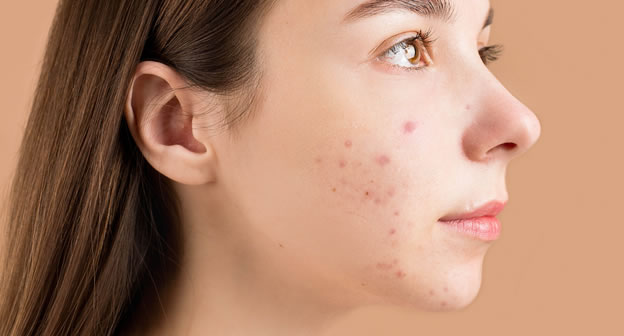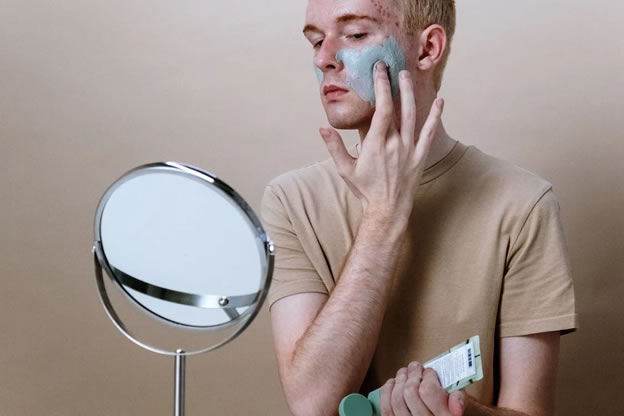
Table Of Contents
- 1 Understanding Fungal Acne
- 2 Understanding Closed Comedones
- 3 Critical Differences Between Closed Comedones vs Fungal Acne
- 3.1 1. Closed Comedones vs Fungal Acne: Underlying Causes And Contributing Factors
- 3.2 2. Fungal Acne vs Closed Comedones: Appearance And Characteristics
- 3.3 3. Diagnostic Methods And Professional Assistance
- 3.4 4. Treatment Options And Prevention Strategies
- 3.5 5. Microbial Involvement
- 3.6 6. Recurrence And Long-Term Management
- 4 Conclusion
When it comes to skincare, there are a plethora of common skin concerns that individuals face. Among these concerns, closed comedones and fungal acne are two issues that can cause confusion and frustration.
Understanding the differences between these two conditions is essential for proper identification and effective treatment. This article will delve into closed comedones and fungal acne, exploring their causes, symptoms, and treatment options.
Understanding Fungal Acne
Fungal acne, also known as pityrosporum folliculitis, is a condition that results from an overgrowth of yeast on the skin’s surface.
Contrary to its name, fungal acne is not caused by bacteria but rather by a type of yeast called Malassezia.
This yeast is naturally present on the skin’s surface, but an overgrowth can lead to the development of fungal acne.
Understanding Closed Comedones
Closed comedones, also known as whiteheads, are a type of non-inflammatory acne lesion. They occur when hair follicles become clogged with dead skin cells, oil, and other debris.
Unlike fungal acne, closed comedones are not caused by yeast or fungal overgrowth.
Critical Differences Between Closed Comedones vs Fungal Acne

Understanding the differences between fungal acne and closed comedones is crucial for accurate identification and appropriate treatment. Here are some key distinctions:
1. Closed Comedones vs Fungal Acne: Underlying Causes And Contributing Factors
Fungal Acne
Fungal acne, or pityrosporum folliculitis, is caused by an overgrowth of yeast called Malassezia. This type of acne is more common in humid environments.
It can be triggered by factors such as excessive sweating, occlusive skincare products, or prolonged use of antibiotics. Ultimately, Malassezia is the leading cause of developing fungal acne.
Closed Comedones
Closed comedones, also known as whiteheads, result from clogged hair follicles due to excess oil production (sebum) and the accumulation of dead skin cells.
Hormonal imbalances, genetics, certain medications, and inadequate skincare routines can contribute to forming closed comedones.
2. Fungal Acne vs Closed Comedones: Appearance And Characteristics
Fungal Acne
Fungal acne appears as small, itchy, red, or skin-colored bumps that often cluster together. These bumps may have a uniform size and can be surrounded by mild inflammation.
In some cases, pustules or papules may develop, resembling traditional acne. Fungal acne lesions are usually not associated with blackheads or whiteheads.
Closed Comedones
Closed comedones are non-inflammatory acne lesions that appear as small, flesh-colored, or white bumps on the skin. These bumps are covered by a thin layer of skin, giving them a closed appearance. Unlike fungal acne, comedones are not inflamed or painful and can develop into red, white or flesh-colored bumps on the skin.
Additionally, closed comedones can evolve into open comedones (blackheads) if the plug in the hair follicle is exposed to air and oxidizes.
Another important difference to note is that closed comedones are almost never painful or inflamed. Nevertheless, if left untreated, they have the potential to become inflamed and form pustules.
3. Diagnostic Methods And Professional Assistance
Fungal Acne
Diagnosis of fungal acne may require professional assistance and further testing. A dermatologist can perform a skin scraping or collect a sample for fungal cultures to confirm the presence of Malassezia yeast.
Microscopic examination of the sample can help distinguish fungal acne from other types of acne.
Closed Comedones
Closed comedones can often be identified through visual examination by a dermatologist. They are typically diagnosed based on their appearance, texture, and absence of inflammation.
Dermatologists may also consider the patient’s medical history and lifestyle factors and perform additional tests if necessary.
4. Treatment Options And Prevention Strategies
Fungal Acne
It usually involves topical antifungal medications such as ketoconazole or ciclopirox to treat fungal acne. These medications help reduce the overgrowth of yeast.
Additionally, adjusting skincare practices by using non-comedogenic and fungal acne-safe products, practicing good hygiene, and avoiding occlusive skincare products can be beneficial.
In some cases, dietary considerations, such as reducing the consumption of sugary or processed foods, may also help treat fungal acne.
Closed Comedones
Treatment options for closed comedones include topical retinoids, which help increase skin cell turnover and prevent clogged pores. Exfoliants containing salicylic or alpha hydroxy acids can also effectively remove dead skin cells and unclog pores.
Professional extraction techniques performed by a dermatologist or esthetician may be necessary for stubborn, closed comedones.
Additionally, adopting a consistent skincare routine that includes gentle cleansing, moisturizing, and avoiding pore-clogging products can help prevent the formation of closed comedones.
5. Microbial Involvement
Fungal Acne
As the name suggests, fungal acne is primarily caused by an overgrowth of yeast, specifically the Malassezia species.
These yeasts are naturally present on the skin, but when their population exceeds normal levels, they can contribute to the development of fungal acne.
The yeast infection overgrowth leads to inflammation and irritation within the hair follicles, resulting in the characteristic appearance of fungal acne lesions.
Closed Comedones
Unlike fungal acne, closed comedones are not directly associated with microbial involvement. They are primarily caused by accumulated sebum and dead skin cells within the hair follicles.
While bacteria, such as Propionibacterium acnes, can play a secondary role in the inflammation and progression of closed comedones, their presence is not the primary cause.
Closed comedones can develop due to hormonal factors, increased sebum production, or impaired shedding of dead skin cells.
6. Recurrence And Long-Term Management
Fungal Acne
One crucial aspect of managing fungal acne is recognizing the potential for recurrence. Even after successful treatment, the Malassezia yeast that causes fungal acne can persist on the skin. Therefore, maintaining healthy skin and avoiding triggers is crucial to prevent reoccurrence.
To manage fungal acne long-term, it’s advisable to continue using antifungal cleansers or topical treatments as a dermatologist prescribes. These products help maintain a balanced skin environment and prevent the overgrowth of yeast infection.
Choosing non-comedogenic skincare products and free from potential irritants is also essential, as these can exacerbate fungal acne.
Additionally, certain lifestyle factors can contribute to the recurrence of fungal acne. Avoiding excessive sweating, wearing breathable fabrics, and practicing good hygiene can all help minimize the risk of flare-ups.
In some cases, dietary adjustments, such as reducing the intake of sugar and processed foods, may also be beneficial.
Closed Comedones
While closed comedones can be effectively treated, they can also potentially recur. Ongoing maintenance is critical to preventing the formation of new closed comedones.
Adopting a consistent skincare routine that includes gentle cleansing, moisturizing, and regular exfoliation can help keep the pores clear and minimize the accumulation of dead skin cells and sebum.
Using non-comedogenic products and avoiding heavy, pore-clogging cosmetics can reduce the risk of closed comedone formation.
For individuals prone to closed comedones, addressing any underlying factors that may contribute to their development is essential. This can include managing hormonal imbalances through medication or lifestyle changes, avoiding excessive oil-based products, and ensuring proper makeup and sunscreen removal at the end of the day.
Regular visits to a dermatologist can also help monitor the condition and make necessary adjustments to the treatment plan. They can provide additional guidance and prescribe more vital topical treatments or oral medications if required.
Conclusion

Understanding the differences between fungal acne vs closed comedones is crucial for effective treatment and prevention strategies. While yeast, when grown excessively, causes fungal acne and requires antifungal medications, closed comedones result from clogged hair follicles. They are typically treated with topical retinoids and proper skincare practices.
If you are having a hard time identifying closed comedones vs fungal acne, it is best to seek professional advice from a board-certified dermatologist for an accurate diagnosis and personalized treatment plan.
By taking the necessary steps to identify and address these skin concerns, you can achieve healthier, clearer skin in the long run.
Moreover, you should also read our previous article about how to get rid of forehead fungal acne and get your skin clear again.
More Content
- Retinol for Fungal Acne
- The Power of Sulfur for Fungal Acne
- Top-Rated Benzoyl Peroxide Face Wash for Acne
- Fungal Acne Cleansers – An Updated List
- Fungal Acne-Safe Toners Your Skin Will Love
- The Best Moisturizers for Fungal Acne
- The BEST Products for Fungal Acne
- TOP rated Sunscreens for Fungal Acne
- The Importance Of Patch Testing Skincare Products
- Clear, Smooth, and Radiant Skin with Almond Clear’s Mandelic Acid Products
- Malezia Skincare: A Game-changer for Fungal Acne
- What is Fungal Acne
Join the Folliculitis Scout Community
Above all, know that you aren’t alone in your fungal acne problems. There’s a whole community of people with this issue that are ready to share their tips and tricks for treating the problem. We love our community at Folliculitis Scout! Socialize with us as well on Facebook. It’s so easy to join and become part of a community that truly supports each other through the journey to better skin.
- “Fungal Acne.” Folliculitis Scout, 15 Feb. 2021, folliculitisscout.com/skin-care/what-is-fungal-acne-everything-you-need-to-know.
- “What Is Dead Skin?” Verywell Health, 21 Jan. 2021, www.verywellhealth.com/dead-skin-5090522.
- “Papules, Pustules and Nodules.” News-Medical.net, 21 Nov. 2016, www.news-medical.net/health/Papules-Pustules-and-Nodules.aspx.
- “Fungal Acne Treatment: The Ultimate Guide &Mdash; Folliculitis Scout.” Folliculitis Scout, 28 Feb. 2021, folliculitisscout.com/skin-care/fungal-acne-treatment-the-ultimate-guide.
- “The Best Products for Fungal Acne on the Face &Mdash; Folliculitis Scout.” Folliculitis Scout, 12 June 2023, folliculitisscout.com/skin-care/the-best-products-for-fungal-acne-on-face.
- “How to Get Rid of Forehead Fungal Acne and Get Skin Clear Again &Mdash; Folliculitis Scout.” Folliculitis Scout, 21 Feb. 2021, folliculitisscout.com/skin-care/fungal-acne-forehead.
